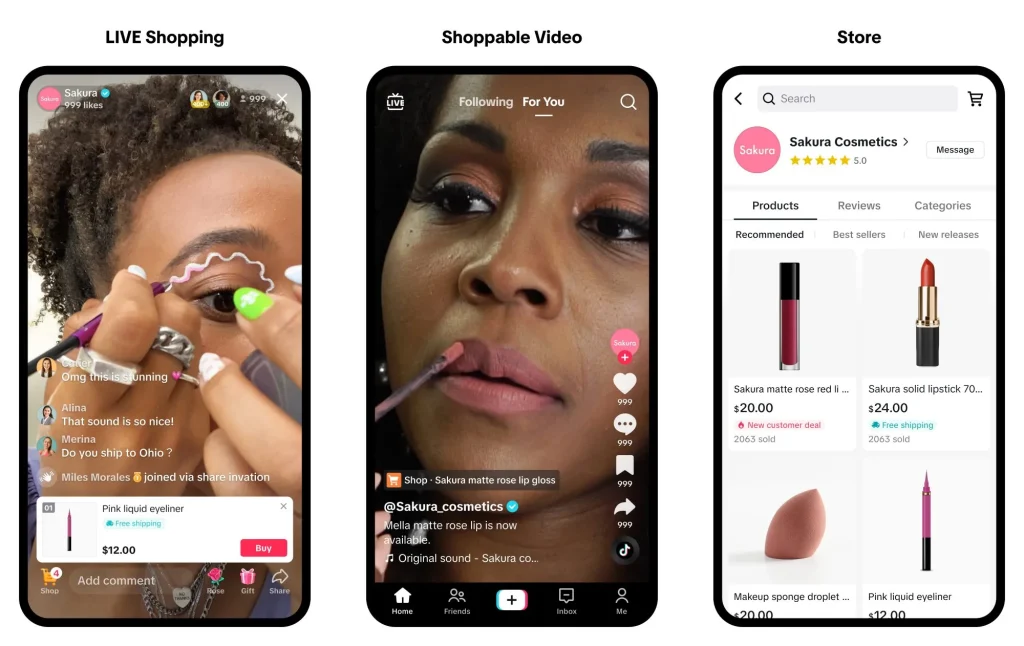In recent years, there’s been a notable shift in how we shop online, thanks to the merging of social media with the convenience of e-commerce. Social commerce merges retail with social media, transforming shopping into an experience we enjoy where we spend most of our time. It makes use of the extensive user base of platforms like Instagram, Facebook, Pinterest, and TikTok, integrating shopping functionalities directly into these networks. Clickable tags, in-app purchases, and live demos enable seamless shopping directly within social media feeds.
How Social Commerce Differs From E-Commerce?
What sets it apart is its ability to leverage the inherently social nature of its platforms. Additionally, tt leverages on network trust, showing us friends and influencers recommendations. Consequently, this integration of social proof enhances engagement and ultimately influences buying decisions.
Moreover, the personalized nature of social commerce stands out. Through the data collected based on our interactions and behaviors on these platforms, it can offer tailored recommendations that match our individual preferences. This level of customisation enhances the shopping experience, making it more likely that we’ll find products that genuinely interest us.
Conclusion
Looking ahead, the boundaries between social networking and online shopping are set to blur even more. Innovations in augmented reality (AR) and artificial intelligence (AI) are poised to enhance the experience. They promise more immersive and personalized shopping methods.
In essence, social commerce marks a major shift in online retail. It highlights not just the convenience of online shopping but also the importance of community and personal connections. As this trend grows, it aims to reshape shopping habits. The focus will be on engagement, personalization, and the social aspect of commerce.

